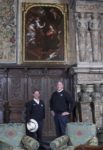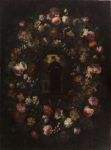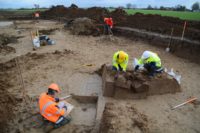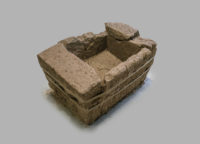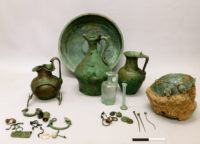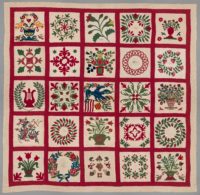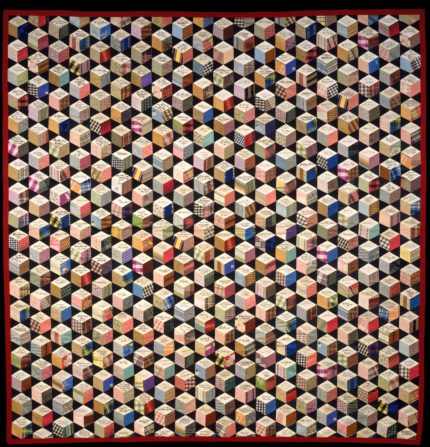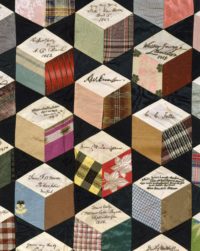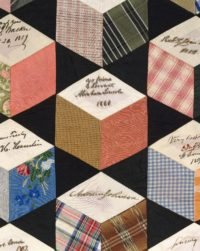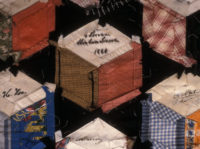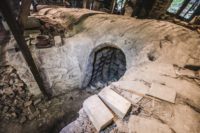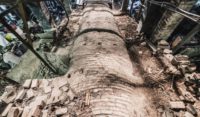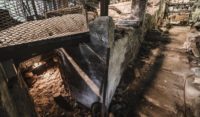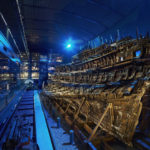 When Henry VIII’s flagship, the Mary Rose sank off the Portsmouth coast on July 19th, 1545, it was carrying 1248 cast iron cannonballs, all lined up next to each other, ready to be deployed. They slumbered under 14 meters (46 feet) of sediment, a virtually oxygen free environment, along with about 19,000 other artifacts and remains until excavations began in 1979. In 1982, the whole ship was raised.
When Henry VIII’s flagship, the Mary Rose sank off the Portsmouth coast on July 19th, 1545, it was carrying 1248 cast iron cannonballs, all lined up next to each other, ready to be deployed. They slumbered under 14 meters (46 feet) of sediment, a virtually oxygen free environment, along with about 19,000 other artifacts and remains until excavations began in 1979. In 1982, the whole ship was raised.
 That was when its real struggle for survival began. The ship and its contents had been protected for 450 years under the sea. As soon as they were exposed to air, they began to deteriorate. After decades of constant spraying in salt water and PEG, the Mary Rose is now dry, stable and in a new display at the Portsmouth Historic Dockyard, but stabilizing archaeological iron is a whole other kind of challenge. Exposure to air and moisture causes iron to break down into a number of iron compounds, and that deterioration is accelerated when there’s chlorine in the mix. Sea water is rich in chlorine, and after nearly five centuries spent absorbing it, the iron cannon shot is highly susceptible to corrosion now that it’s out of the water.
That was when its real struggle for survival began. The ship and its contents had been protected for 450 years under the sea. As soon as they were exposed to air, they began to deteriorate. After decades of constant spraying in salt water and PEG, the Mary Rose is now dry, stable and in a new display at the Portsmouth Historic Dockyard, but stabilizing archaeological iron is a whole other kind of challenge. Exposure to air and moisture causes iron to break down into a number of iron compounds, and that deterioration is accelerated when there’s chlorine in the mix. Sea water is rich in chlorine, and after nearly five centuries spent absorbing it, the iron cannon shot is highly susceptible to corrosion now that it’s out of the water.
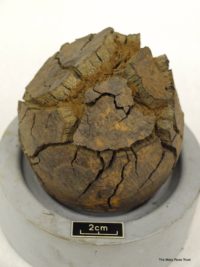 Conservators have attempted to prevent this ugly fate with a variety of approaches. The bulk of the iron balls were stored in a passive environment — a high pH solution — that kept them as stable as possible to their home under the sediment. This makes them unable to be exhibited and does not remove the corrosive salts and chlorine. Some of the balls were therefore subjected to active conservation techniques, either reduction-based desalination treatments which aim to remove chlorine from iron artifacts by chemically altering the molecules of Iron(III) chloride, or washing methods which remove the chlorine by diffusion it into water solutions.
Conservators have attempted to prevent this ugly fate with a variety of approaches. The bulk of the iron balls were stored in a passive environment — a high pH solution — that kept them as stable as possible to their home under the sediment. This makes them unable to be exhibited and does not remove the corrosive salts and chlorine. Some of the balls were therefore subjected to active conservation techniques, either reduction-based desalination treatments which aim to remove chlorine from iron artifacts by chemically altering the molecules of Iron(III) chloride, or washing methods which remove the chlorine by diffusion it into water solutions.
The problem is that there isn’t much solid scientific evidence to go on that points to which solution works best, whether there are any unintended consequences in the short or long term, etc. There are no real comparable treatments of archaeological iron to go by, and it’s hard to say if the condition of a given artifact is caused by a conservation technique or one of a myriad other variables.
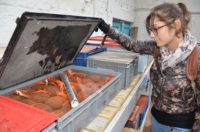 A new study is hoping to answer some of those questions using a few of the cannon balls of the Mary Rose as the canaries in the coal mine. The shot was produced in bulk at the single iron blast furnace that existed in Tudor England; it was new when it sank and it was all buried together. Their uniformity of design, manufacturer and history, and the careful application of diverse treatment protocols after their recovery eliminates a lot of those pesky variables and gives researchers the opportunity to study in detail at the molecular level how effective the different treatments have been.
A new study is hoping to answer some of those questions using a few of the cannon balls of the Mary Rose as the canaries in the coal mine. The shot was produced in bulk at the single iron blast furnace that existed in Tudor England; it was new when it sank and it was all buried together. Their uniformity of design, manufacturer and history, and the careful application of diverse treatment protocols after their recovery eliminates a lot of those pesky variables and gives researchers the opportunity to study in detail at the molecular level how effective the different treatments have been.
The UK National Synchroton Facility at Diamond Light Source in Didcot in Oxfordshire has deployed the ultra-bright X-ray power of the particle accelerator to analyze the iron in exceptional detail. Researchers used synchrotron X-ray powder diffraction (SXPD), absorption spectroscopy (XAS), and fluorescence (XRF) mapping to identify the precise location of the chlorine inside the balls and determine what corrosion products have formed in the conservation process.
The study did require a sacrifice, however. In order to do the initial examination, and to move forward on a long-term study that puts samples embedded in lucite on a beamline and maps the chlorine and corrosion over time, six of the shots had to be destructively sampled. It was a difficult decision, but the Mary Rose has an enormous collection that makes it possible to sacrifice a few for the good of the many, so in 2016 conservators decided to cut segments out of the cannon balls that were already showing significant signs of deterioration.
Dr Eleanor Schofield continues: “We knew that we needed to really delve into the material and find out what was going on, and that this would require destructive sampling. This decision was not taken lightly, and was justified by sacrificing a small percentage of our collection for the benefit of the rest and other collections around the world which suffer the same problem.”
Hayley Simon, who is now part way through her PhD adds: “These results represent a first step towards the development of new protective techniques. We are launching next a long duration experiment, which will observe changes in the corrosion product during long-term immersion in various conservation treatments to monitor their effects.”
The first paper charting the results of the synchroton mapping of the elements has now been published (only available free to subscribers, available for rent or purchase for the rest of us).

